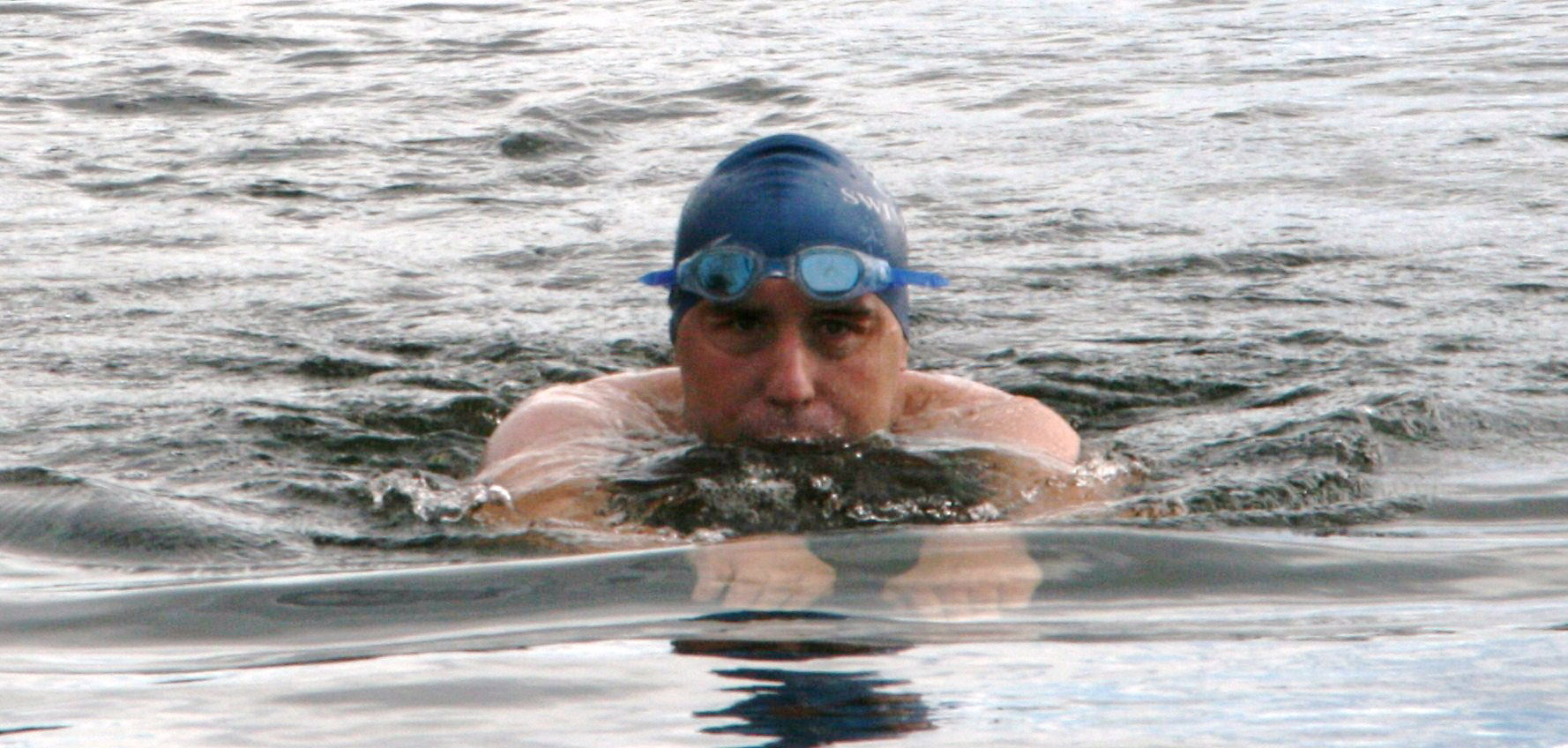Displaying items by tag: Gary Knox
Swim from Ballycastle to Rathlin Island Completed
Local French teacher Gary Knox has completed his swim from Rathlin to Ballycastle for Portrush Lifeboat Station on the very day that the station was celebrating its 150th Anniversary.
Gerry Doran Chairman of the Ballycastle Fundraising Branch texted the station at the start of the race and then at the end to confirm that Gary had completed his amazing feat!
This information was then relayed to the people who had gathered in Portrush for the Service of Thanksgiving and Vellum presentation.
Shelley Pinkerton, Chairman of the Portrush Fundraising Branch said
'This is an example of the innovative ways that people come up with to raise funds for the RNLI. It's very fitting that Gary completed the swim on the very day we are gathered to celebrate Portrush Lifeboat Station 150 years of saving lives at sea'
Gary who was not wearing wetsuit swam approximately 7 miles in 2 hours 55 minutes. The swim was for the RNLI and in memory of his friend and training partner, Ciaran McGinn who completed the endurance swim in 2007 and raised funds for his charity, Ballycastle RNLI.
Gary was accompanied by Portrush kayakers who followed the rib and provided him with energy drink every hour. In accordance with ILDSA rules, Gary was not permitted to touch the boat or kayak. Donations can still be made online at justgiving.com/gary-knox and there are collection boxes in the shops along the prom in Ballycastle.
Gary would like to thank Alan Wilson of Aquasports for providing boat cover, John Morton for advice and guidance, members of the Ballycastle Fundraising Branch and others for their assistance in organising the event.

Gary nears the finish line
Swimming from Rathlin to Ballycastle for the RNLI
Gary explained further 'The swim is from Rathlin to Ballycastle and is planned for the weekend of 4-5 September. I won't be wearing a wetsuit and the swim is approximately 7 miles. Water temperature will be approx. 12 degrees and the challenge isn't so much the distance as the large number of Lions Mane jellyfish which lie between Rathlin and Ballycastle and the very strong and treacherous currents which swirl around the island. I am doing the swim for RNLI in memory of my friend and training partner, Ciaran McGinn who completed the endurance swim in 2007 and raised funds for his charity, Ballycastle RNLI. Training has gone well and I've done a 15K open water swim, Portrush to Portstewart two-way and a swim from Ballycastle to Fairhead in preparation for the event. I've been stung by the jellies and got my body used to the chilly waters. The swim to Fairhead last weekend opened my eyes to the strong currents when I made no progress for 90 mins on way back to Ballycastle and had to jump out onto road and hitch a lift back into town! Hopefully the tides will be kinder to me on day of swim. I'll be accompanied by Portrush kayaker Andrew Bingham who will follow the rib and provide me with an energy drink every hour. In accordance with ILDSA rules, at no time will I be permitted to touch the boat or kayak. Donations can be made online at justgiving.com/gary-knox and there are collection boxes in the shops along the prom in Ballycastle. In the event of bad weather, swim will be rescheduled for mid Sept or October. The swim has a low success rate and is very dependent on conditions and tides on the day'
Gary who is a French teacher, 38, and swimming coach at CAI who took up sea swimming in 2008 and lives in Aghadowey. On Sunday he came down to meet the crew and tell them about the swim.
Judy Barr Lifeboat Press Officer said,
This is an amazing feat for anyone to attempt and we are delighted that Gary is raising funds for our volunteer crews and the Station who depends on donations to keep our two boats available for rescues at sea.'






























































